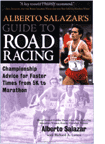Reviews:
Reporter World provides a variety of safety equipment, identification products, specialized high-visibility clothing, pertinent news, product reviews, book reviews and useful links specifically for reporters, writers, assignment editors, news correspondents, journalists, ENG crews, photographers, production staff, directors, segment producers, media security personnel, and freelancers: in short, anyone who is part of the news gathering, information reporting, or documentary film industries.
In this section we review various products and services of relevance to reporters, writers, correspondents, ENG teams and production staff. These products include cameras and accessories; computer hardware and software; scanners; printers; books and other products. Smaller, mini-reviews, are also available in other sections of this site including Products, Books and Movies.
We are constantly adding additional reviews to this section. If you have any suggestions for other products you would like us to review, simply e-mail us using the feedback address on our Terms of Service page. Please supply us with as much information as you can about the product (including name, manufacturer, model number) or book (including title, author, ISBN and publisher).
 Title: Alberto Salazar's Guide to Road Racing Title: Alberto Salazar's Guide to Road Racing
Authors: Alberto Salazar and Richard Lovett
Copyright: © 2003
Publisher: Ragged Mountain Press, an imprint of McGraw-Hill
ISBN: 0-07-138308-5
Relevance: As more and more reporters, correspondents, and ENG crew members age and as we are posted to exotic countries where few, if any, exercise facilities exist, running is becoming one of the few ways that most of us can keep fit, trim and alert.
Review: Alberto Salazar, of course, is one of America's greatest distance runners and is currently the coach of the Oregon project, a Nike sponsored organization that uses specific high tech scientific training methods to build world-class distance runners. Salazar knows exactly what he is talking about. He has a history of marathon running and Olympic success. Richard Lovett, Salazar's co-author, is a professional writer (and amateur runner).
Salazar starts his book with his own personal experience which builds the reader's understanding of how to improve one's running time, reduce one's recovery time, and generally become a truly better runner. The book is peppered with real medical science unlike many other running books which have anecdotal (at best) information and other factoids. At the level that Salazar wants his target readers to race at, there are serious medical issues that must be addressed front up and to the point. Salazar does this well.
One of the more interesting sections in Alberto Salazar's Guide to Road Racing comes near the beginning of the book, where Salazar describes the basic principles of running faster. The relationship between muscle power, fuel and oxygen, as well as anaerobic metabolism and aerobic metabolism, the role of ATP (Adenosine Triphosphate) is detailed. The upshot of all this information is that runners start to understand the science behind the running, and the reason why training can be painful. They also learn how to better themselves with scientific accuracy, not anecdotal stories.
Many sidebars, illustrations, charts and tables underscore Salazar's understanding of the science behind his running. Not only do readers have the benefit of Salazar and Lovett's experience, we also get the benefit of their humor.
Pass the dark meat, please...
The authors explain, for example, how muscle cells come in two basic types: fast-twitch and slow-twitch. In a sidebar titled "Pass the Drumstick Please", we read that fast-twitch cells are generally white in color and slow-twitch cells are generally red.
In humans, these cell types are randomly mixed up throughout our muscles. In birds, however, wings and legs are generally slow-twitch versus the breast tissue which is generally fast-twitch. This explains why chickens (and other birds) have defined white and dark meat. This example may seem trivial, but it underscores a key point that Salazar and Lovett make throughout the book: to improve your running, you have to improve your understanding of the science of running.
In the authors' eyes, an individual runner has to understand the physics, chemistry and biology of his or her own body when its under running stress to fully maximize one's running potential. Life metaphors aside, this information is invaluable for all runners both professional and recreational.
Principles of running faster including VO2max, callusing the mind, hard-easy patterns, hydration, upper body form, leg motion and speed training are all covered well and serve to provide the base platform upon which all runners must build. Other basics such as stretching, weight training and cross training, nutrition and weight control, how to handle aches and pains, and how to train the runner's mind (including the struggle between your body telling you to quit and your mind telling it to continue) are also discussed.
Preparing for race day
An important part of the book outlines the specific steps taken in preparing for a race. Regardless of the distance you choose to compete at, there are a huge number of tips and pointers that help beginning and experienced runners compete better on race day.
Concrete, real-world suggestions are given for many different problems including registration and packet pick-up, what to do before the race, when to wake up, how to warm up, and how to handle the start of your race. Also covered are how to calculate you split times, deciding on your overall race strategy, tricks to keeping hydrated (but not waterlogged), and tactics for those last few race miles.
Salazar's book also discusses after-race recovery strategies as well as how to set your next racing goal. This part of the book is invaluable for those who are new to racing -- or those who need help breaking through specific time limits.
The final section of the book is devoted to marathon training. This is where Salazar and Lovett are obviously in their element and discuss key issues such as how to build up your base line mileage, qualifying times of the Boston Marathon and suggested speed workouts for marathon trainers.
Marathoning can certainly be described as the lone attempt of one's mind to overcome the body's aches and pains -- and Salazar and Lovett explain not only the physical conditioning needed to make this happen, but the all-important mental conditioning to ensure that it does.
Other topics such as masters running and advanced challenges such as cross-country, trail running and relay races, as well as triathlons and ultramarathons are also discussed. The book finishes up with a pace chart of common workout and racing distances so that aspiring marathoners (and runners of other distances) can understand how pace setting is directly dependent on finishing time.
Overall: The book is highly recommended for any runner, be s/he a recreational runner, semi-professional or contemplating turning pro Alberto Salazar's Guide to Road Racing is also a great addition to any health beat reporter, sports commentator, or other interested writer who needs to understand the mechanics, science, strategy, and other key factors involved with long distance running.
End of Review
Have your say.
You can give us your feedback by visiting our Terms of Service page.
Buy this book.
If you wish to buy this book right now, please click here.
Read other reviews.
If you wish to return to the Reviews page, please click here.
|
|
|





